Eutectic Phase Characterization and Mechanical Properties of Al-Cu Alloy Ingot Solidified with Ultrasonic Treatment
Abstract
:1. Introduction
2. Materials and Methods
2.1. Experimental Equipment
2.2. Melting and Ultrasonic Treatment Process
2.3. Sample Preparation and Testing
2.4. The Method of Quantitative Detection for Eutectic Phase
3. Results
3.1. Grain Structure
3.2. Eutectic Morphology and Quantitative Analysis
3.3. Relative Intragranular Cu Content
3.4. Mechanical Properties of Ultrasonic Ingots and Conventional Ingots
4. Discussion
Effect of Ultrasound on Microstructural Evolution and Solute Distribution
5. Conclusions
Author Contributions
Funding
Data Availability Statement
Conflicts of Interest
References
- Liu, L.; Wu, Y.; Gong, H.; Li, S.; Ahmad, A.S. A Physically Based Constitutive Model and Continuous Dynamic Recrystallization Behavior Analysis of 2219 Aluminum Alloy during Hot Deformation Process. Materials 2018, 11, 1443. [Google Scholar] [CrossRef] [PubMed] [Green Version]
- Inoue, A.; Shen, B.L.; Koshiba, H.; Kato, H.; Yavari, A.R. Ultra-high strength above 5000 MPa and soft magnetic properties of Co–Fe–Ta–B bulk glassy alloys. Acta Mater. 2004, 52, 1631–1637. [Google Scholar] [CrossRef]
- Liu, J.; Shan, C.; Hou, Y. Main Defects and Quality Control Technology of Aluminum Alloy Materials; Metallurgical Industry Press: Beijing, China, 2012; p. 28. [Google Scholar]
- He, H.; Yi, Y.; Huang, S.; Zhang, Y. An improved process for grain refinement of large 2219 Al alloy rings and its influence on mechanical properties. J. Mater. Sci. Technol. 2019, 35, 55–63. [Google Scholar] [CrossRef]
- Zhang, Y.; Li, R.; Li, X.; Zhang, Y. Possible Effects and Mechanisms of Ultrasonic Cavitation on Oxide Inclusions during Direct-Chill Casting of an Al Alloy. Metals 2018, 8, 814. [Google Scholar] [CrossRef] [Green Version]
- Katgerman, L.; Eskin, D.G.; Venneker, B.C.H.; Zuidema, J., Jr. Experimental Description and Process Simulation of Direct Chill (DC) Casting of Aluminum Alloys. In Aluminium Cast House Technology VIII; Whiteley, P.R., Ed.; Wiley: Hoboken, NJ, USA, 2010. [Google Scholar]
- Wolf, M. Henry Bessemer and continuous casting. Revue Métallurgie 2002, 98, 63–73. [Google Scholar] [CrossRef]
- Sigworth, G.K. Fundamentals of Solidification in Aluminum Castings; Springer: Cham, Switzerland, 2014; pp. 7–20. [Google Scholar]
- Barbosa, J.; Puga, H. Ultrasonic Melt Treatment of Light Alloys. Inter. J. Metalcast. 2019, 13, 180–189. [Google Scholar] [CrossRef]
- Puga, H.; Tohidi, S.D.; Carneiro, V.H.; Meireles, J.; Prokic, M. Ceramic Sonotrodes for Light Alloy Melt Treatment. Inter. J. Metalcast. 2021, 15, 459–469. [Google Scholar] [CrossRef]
- Eskin, G.I.; Eskin, D.G. Ultrasonic Treatment Light Alloy Melts, 2nd ed.; CRC Press: Boca Raton, FL, USA, 2014; pp. 194–216. [Google Scholar]
- Eskin, G.I. Effect of ultrasonic (cavitation) treatment of the melt on the microstructure evolution during solidification of aluminum alloy ingots. Ztschrift Fur Metallkunde 2013, 93, 502–507. [Google Scholar] [CrossRef]
- Eskin, G.I.; Eskin, D.G. Production of natural and synthesized aluminum-based composite materials with the aid of ultrasonic (cavitation) treatment of the melt. Ultrason. Sonochem. 2003, 10, 297–301. [Google Scholar] [CrossRef]
- Aybarc, U.; Yavuz, H.; Dispinar, D.; Seydibeyoglu, M.O. The Use of Stirring Methods for the Production of SiC-Reinforced Aluminum Matrix Composite and Validation via Simulation Studies. Inter. J. Metalcast. 2019, 13, 190–200. [Google Scholar] [CrossRef]
- Khalifa, W.; Tsunekawa, Y.; Okumiya, M. Ultrasonic Grain Refining Effects in A356 Al-Si Cast Alloy. In Symposium on the Sustainable Mechanical System; AFS Library File: 20100159A; American Foundry Society: Schaumburg, IL USA, 2010; Volume 118, pp. 91–98. [Google Scholar]
- Jian, X.; Xu, H.; Meek, T.T. Effect of power ultrasound on solidification of aluminum A356 alloy. Mater. Lett. 2005, 59, 190–193. [Google Scholar] [CrossRef]
- Dong, F.; Li, X.; Zhang, L.; Ma, L.; Li, R. Cavitation erosion mechanism of titanium alloy radiation rods in aluminum melt. Ultrason. Sonochem. 2016, 31, 150–156. [Google Scholar] [CrossRef] [PubMed]
- Tian, Y.; Liu, Z.; Li, X.; Zhang, L.; Li, R.; Jiang, R.; Dong, F. The cavitation erosion of ultrasonic sonotrode during large-scale metallic casting: Experiment and simulation. Ultrason. Sonochem. 2018, 43, 29–37. [Google Scholar] [CrossRef] [PubMed]
- Jian, R.; Li, X.; Chen, P.; Li, R.; Zhang, X. Effect and kinetic mechanism of ultrasonic vibration on solidification of 7050 aluminum alloy. AIP Adv. 2014, 4, 077125. [Google Scholar] [CrossRef]
- Peng, H.; Li, R.; Li, X.; Ding, S.; Chang, M.; Liao, L.; Zhang, Y.; Chen, P. Effect of Multi-Source Ultrasonic on Segregation of Cu Elements in Large Al–Cu Alloy Cast Ingot. Materials 2019, 12, 2828. [Google Scholar] [CrossRef] [Green Version]
- Zhang, L.; Li, X.; Li, R.; Jiang, R.; Zhang, L. Effects of high-intensity ultrasound on the microstructures and mechanical properties of ultra-large 2219 Al alloy ingot. Mater. Sci. Eng. A 2019, 763, 138154. [Google Scholar] [CrossRef]
- Zhang, Y.; Li, R.; Chen, P.; Yang, Y.; Li, X.; Jiang, R. Tuning the microstructure morphology and genetic mechanical properties of 2219 Al alloy with ultrasonic treatment. J. Alloys Compd. 2020, 846, 156251. [Google Scholar] [CrossRef]
- Zhang, Y.; Li, R.; Chen, P.; Li, X.; Liu, Z. Microstructural evolution of Al2Cu phase and mechanical properties of the large-scale Al alloy components under different consecutive manufacturing processes. J. Alloys Compd. 2019, 808, 151634. [Google Scholar] [CrossRef]
- Zhu, X.; Ai, S.; Fang, D.; Liu, B.; Lu, X. A novel modeling approach of aluminum foam based on MATLAB image processing. Comput. Mater. Sci. 2014, 82, 451–456. [Google Scholar] [CrossRef]
- Gonzalez, R.C.; Woods, R.E.; Eddins, S.L. (Eds.) Digital Image Processing Using MATLAB; Pearson Education: London, UK, 2004; Volume 21, pp. 197–199. [Google Scholar]
- Guo-Quan, L. Stereology: An interdiscplinary science of spatial structures and imges. Comp. Tomo. Theo. Appl. 2000, 9, 6–9. [Google Scholar]
- Sandau, K. Unbiased Stereology: Three-Dimensional Measurement in Microscopy. J. Microsc. 1999, 193, 153–157. [Google Scholar] [CrossRef]
- Su, S.; Li, X.; Li, R.; Zhang, W. Determination of the Cavitation Range of Power Ultrasound in an Aluminum Alloy Melt. J. Test. Eval. 2018, 46, 20170138. [Google Scholar] [CrossRef]
- Li, R.; Liu, Z.; Dong, F.; Li, X.; Chen, P. Grain Refinement of a Large-Scale Al Alloy Casting by Introducing the Multiple Ultrasonic Generators During Solidification. Metall. Mater. Trans. A 2016, 47, 3790–3796. [Google Scholar] [CrossRef]
- Bao, G.; Wei, G.; Zhao, S. Numerical solution of the Helmholtz equation with high wavenumbers. Int. J. Numer. Meth. Eng. 2004, 59, 389–408. [Google Scholar] [CrossRef]
- Tzanakis, I.; Lebon, G.; Eskin, D.G.; Pericleous, K.A. Characterizing the cavitation development and acoustic spectrum in various liquids. Ultrason. Sonochem. 2017, 34, 651–662. [Google Scholar] [CrossRef] [PubMed] [Green Version]
- Lebon, G.; Tzanakis, I.; Djambazov, G.; Pericleous, K.; Eskin, D.G. Numerical modelling of ultrasonic waves in a bubbly Newtonian liquid using a high-order acoustic cavitation model. Ultrason. Sonochem. 2017, 37, 660–668. [Google Scholar] [CrossRef] [PubMed]
- Jiang, W.; Fan, Z.; Dai, Y.; Li, C. Effects of rare earth elements addition on microstructures, tensile properties and fractography of A357 alloy. Mater. Sci. Eng. A 2014, 597, 237–244. [Google Scholar] [CrossRef]
- Zhu, J.; Jiang, W.; Li, G.; Guan, F.; Yu, Y.; Fan, Z. Microstructure and mechanical properties of SiCnp/Al 6082 aluminum matrix composites prepared by squeeze casting combined with stir casting. J. Mater. Process. Technol. 2020, 283, 116699. [Google Scholar] [CrossRef]
- Hansen, N. Hall-petch relation and boundary strengthening. Scripta Mater. 2004, 51, 801–806. [Google Scholar] [CrossRef]
- Huang, M.; Li, Z. Size effects on stress concentration induced by a prolate ellipsoidal particle and void nucleation mechanism. Int. J. Plast. 2005, 21, 1568–1590. [Google Scholar] [CrossRef]
- Al-Helal, K.; Chang, I.; Patel, J.B.; Fan, Z. Thermomechanical treatment of high-shear melt-conditioned twin-roll cast strip of recycled AA5754 alloy. JOM 2019, 71, 2018–2024. [Google Scholar] [CrossRef] [Green Version]
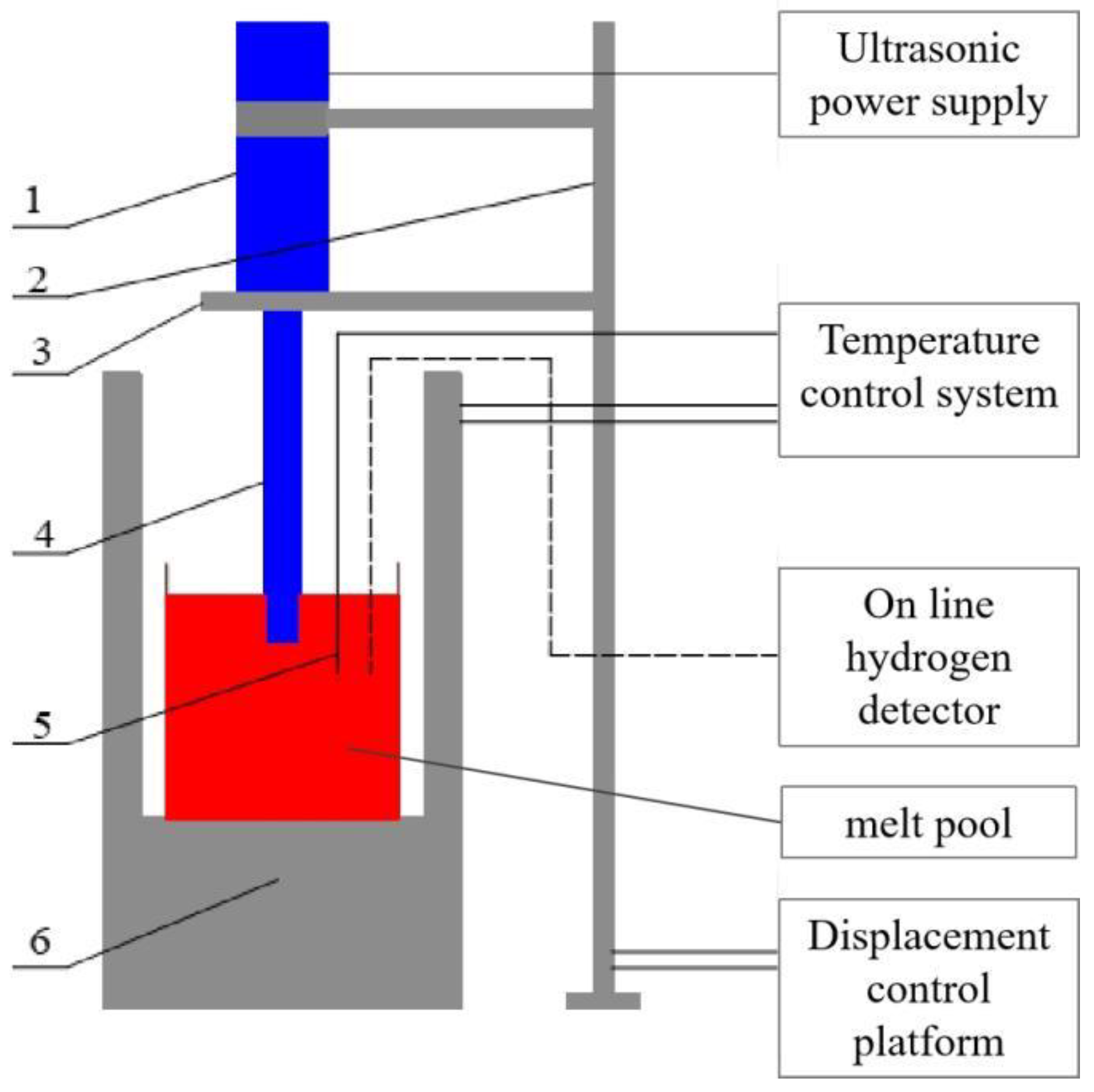

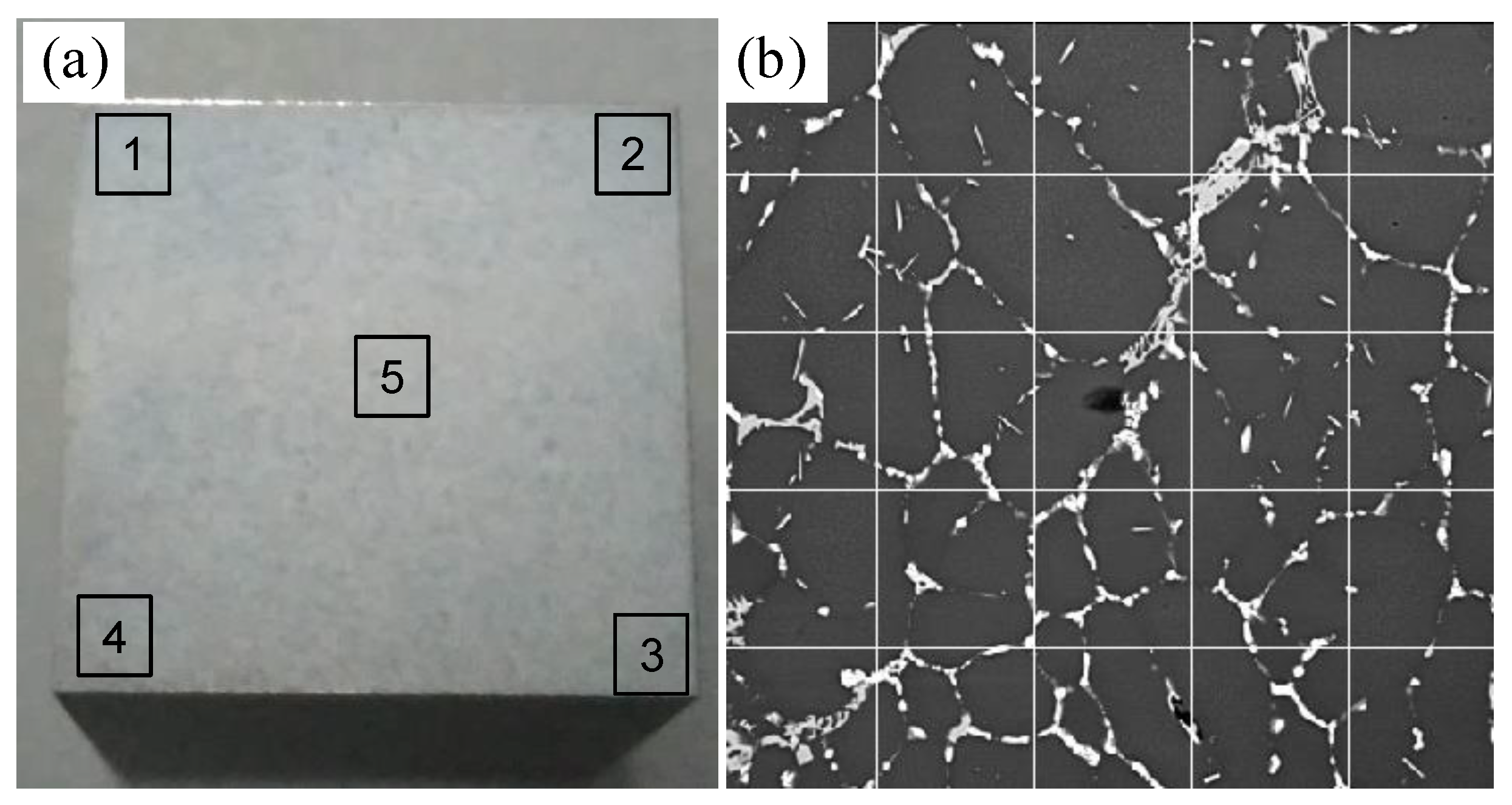
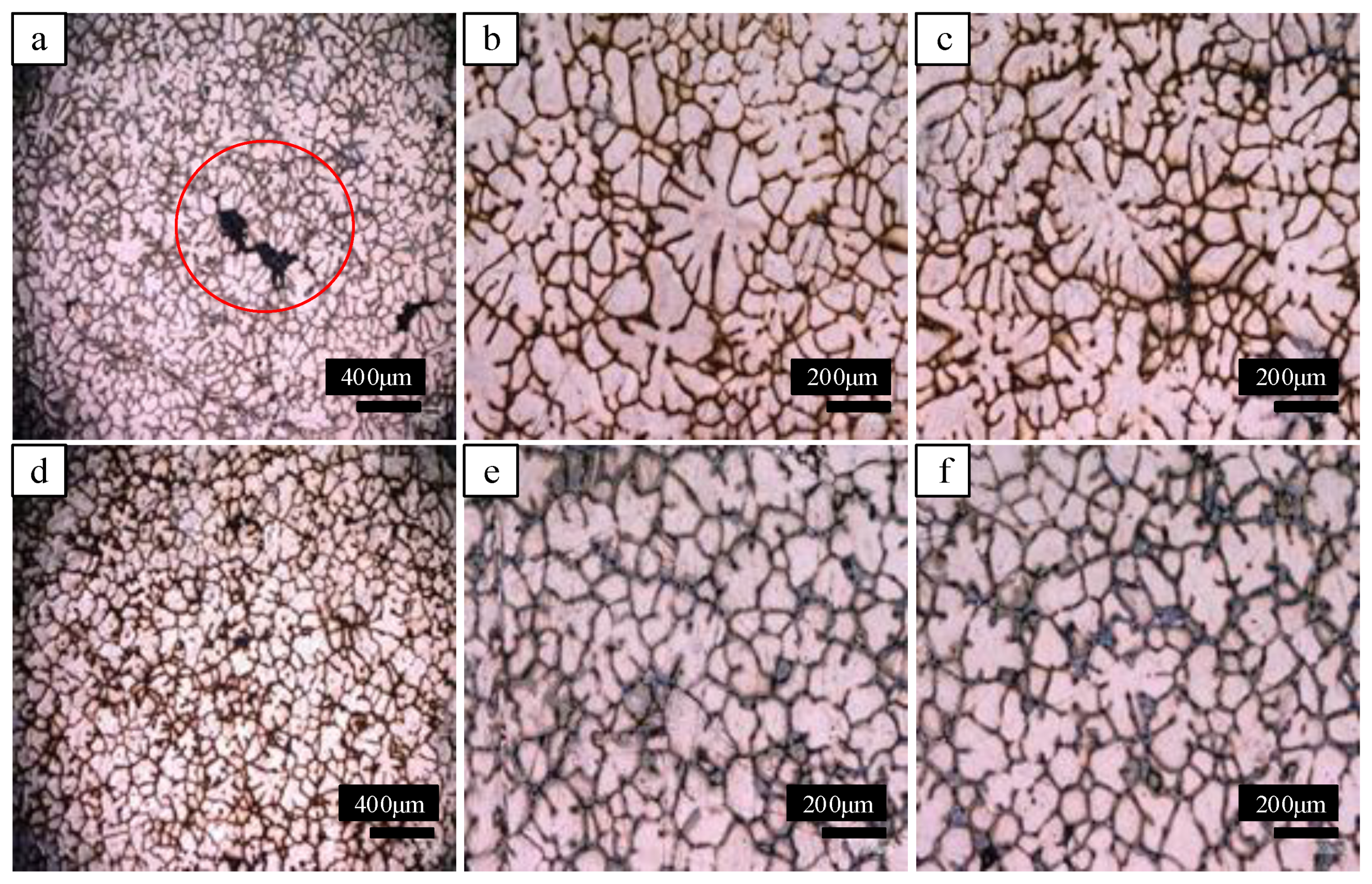
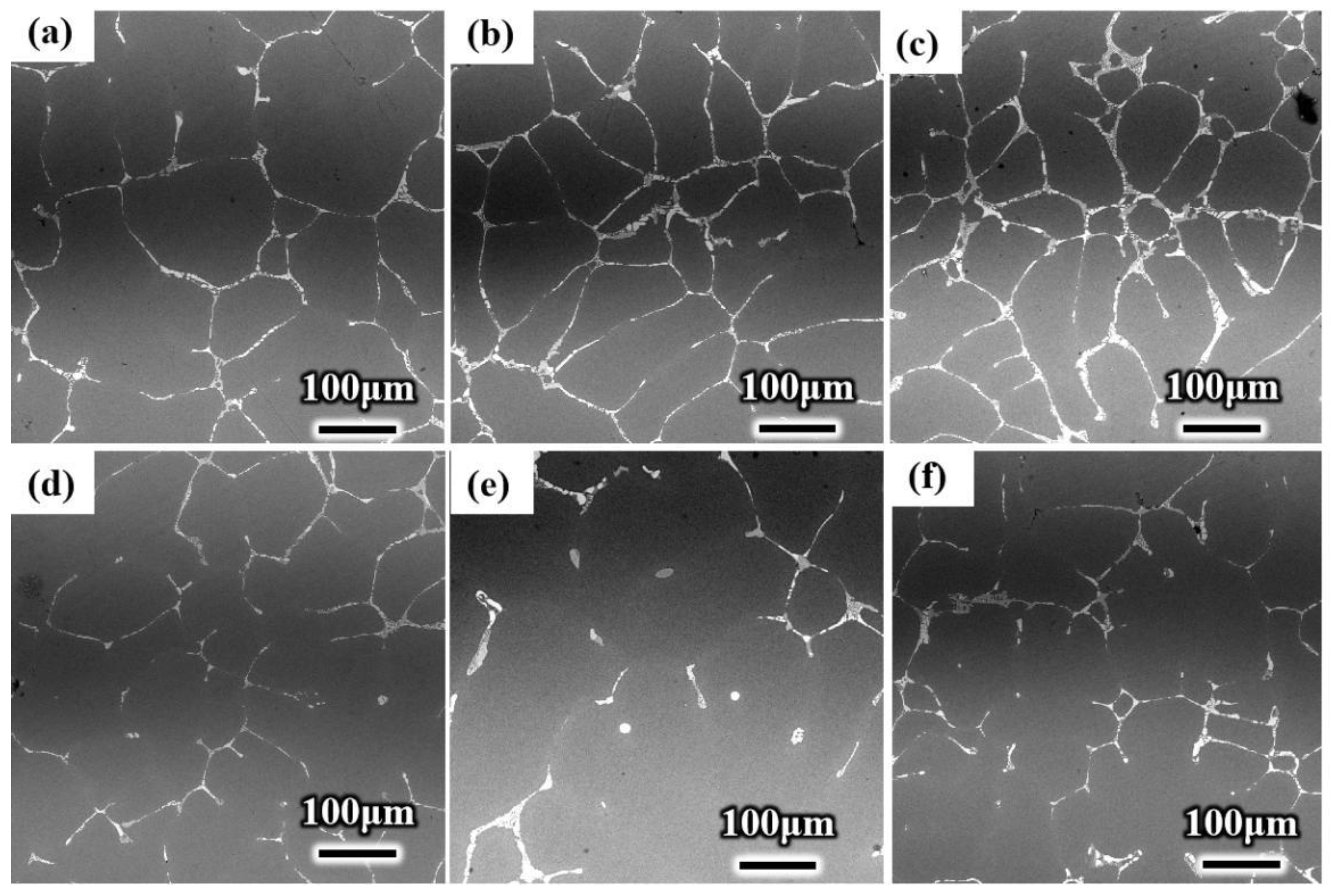
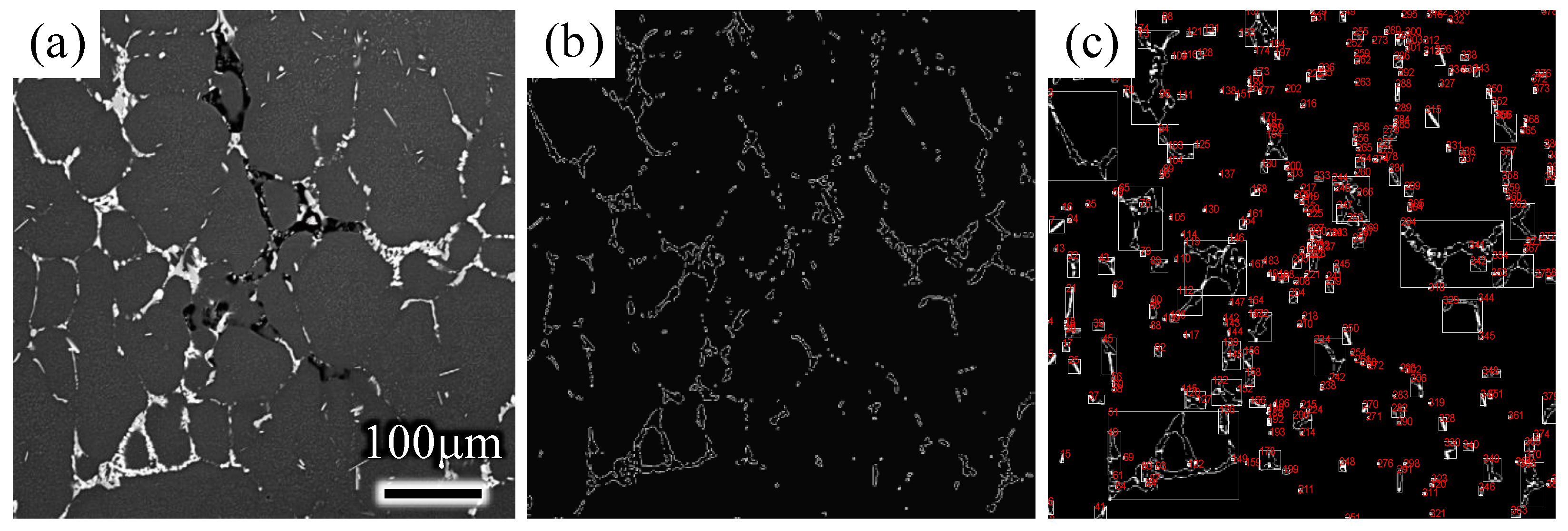

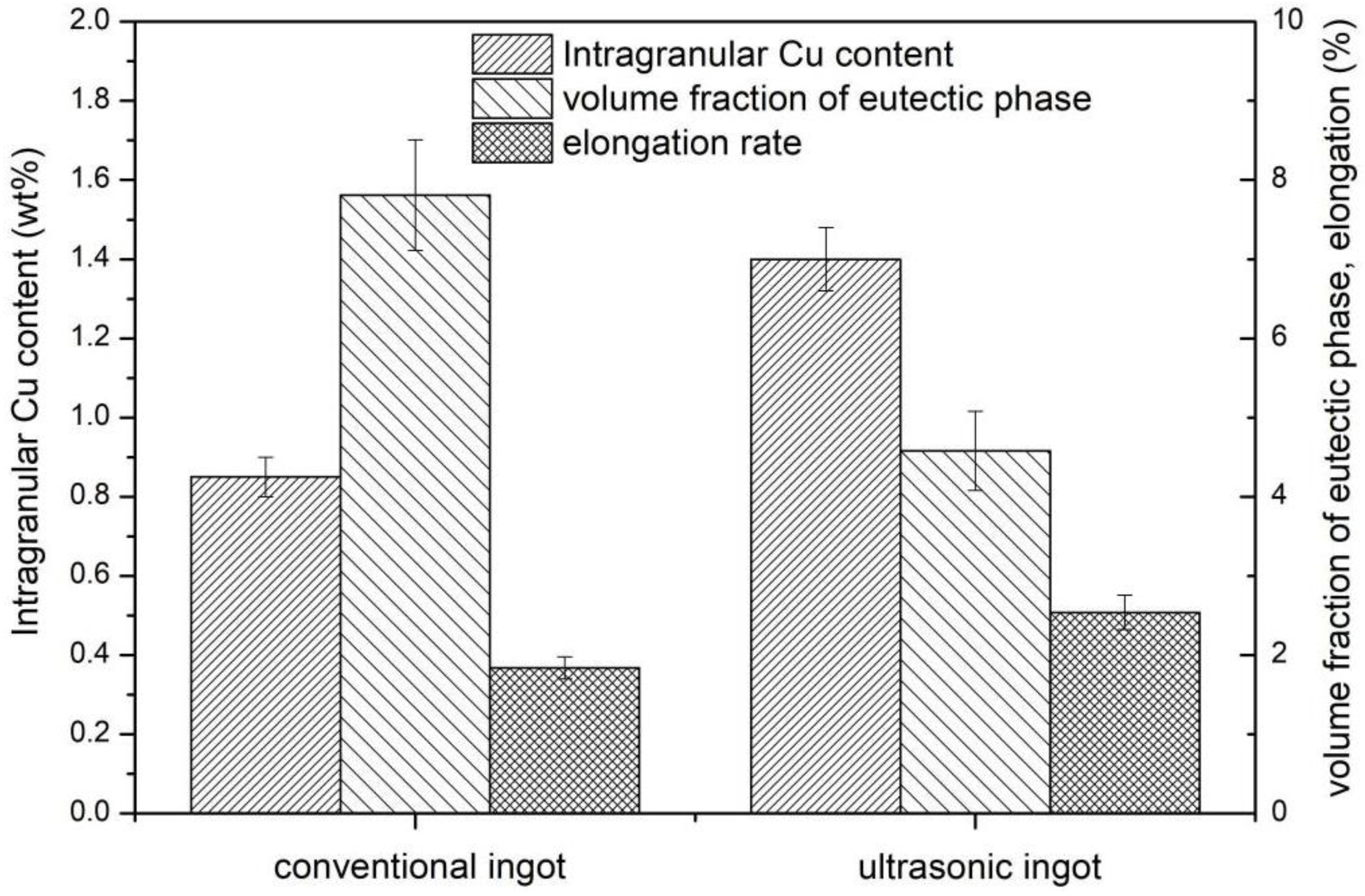
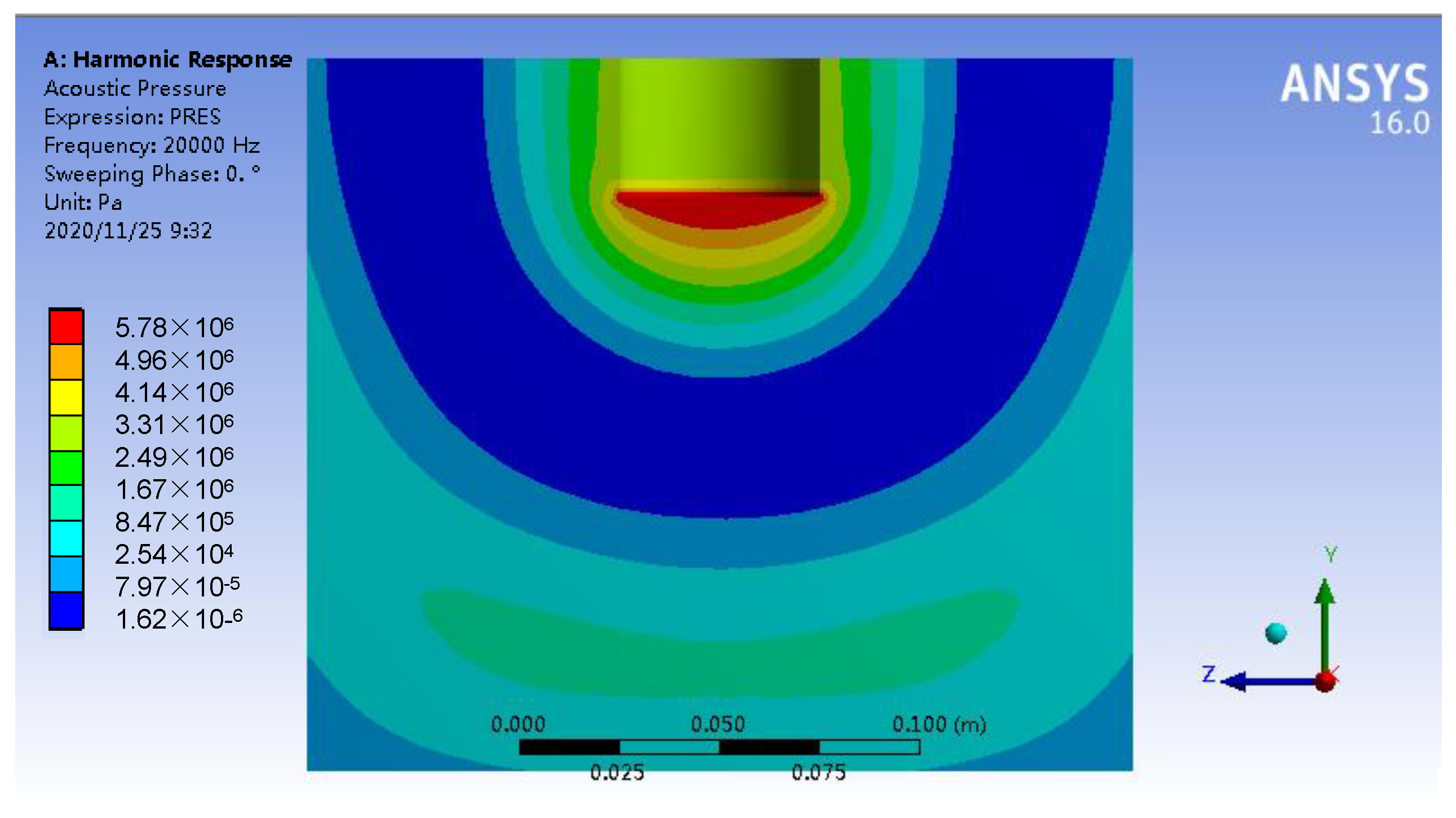
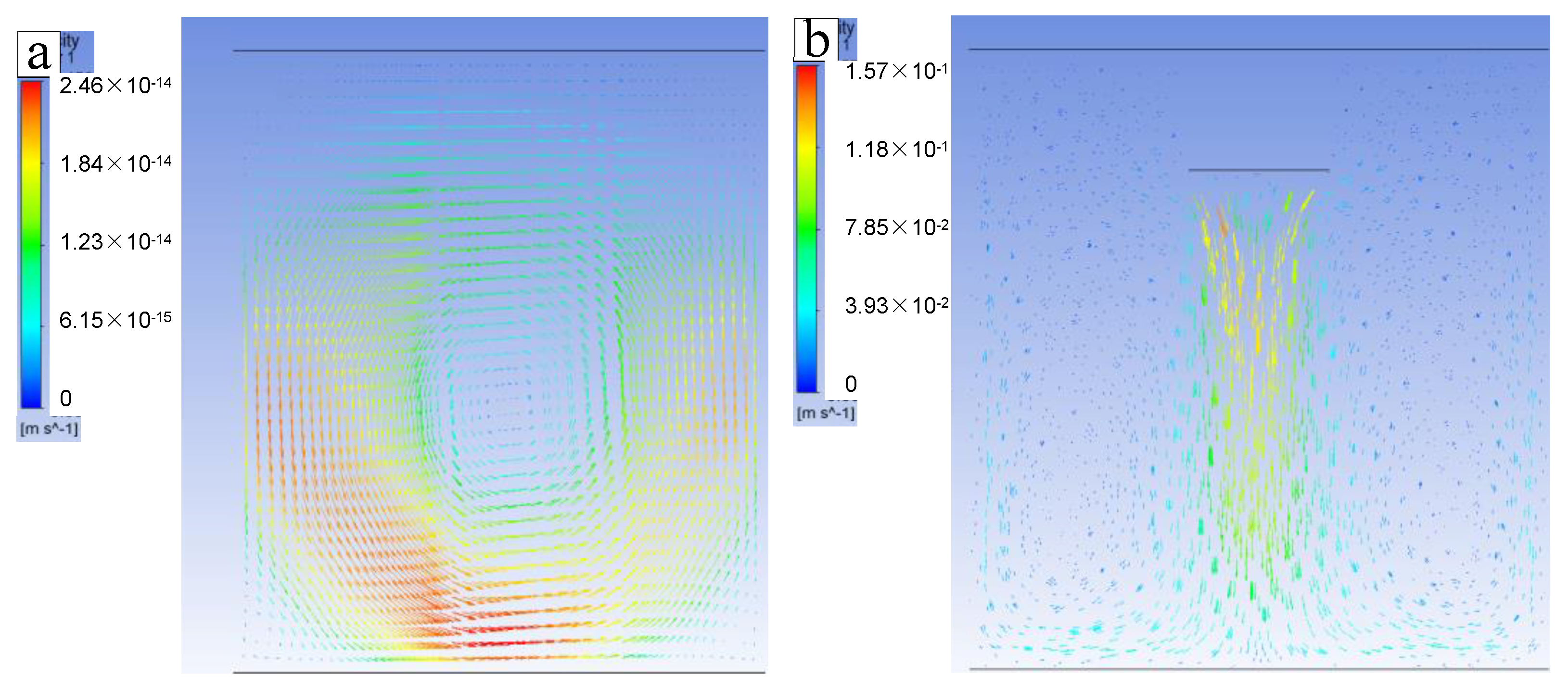

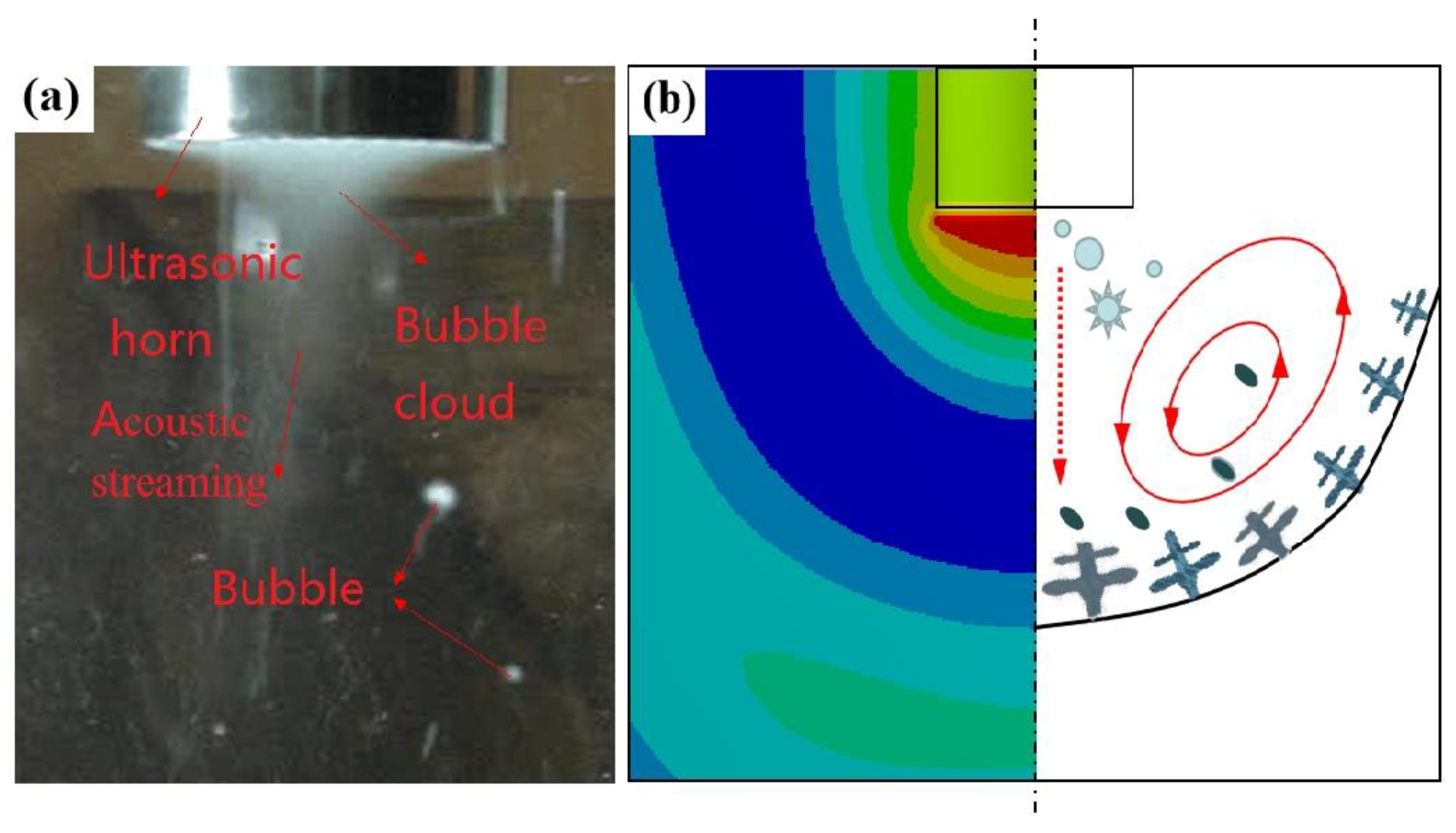
| Composition | Si | Fe | Cu | Mn | Mg | Zn | Ti | Ni | Al |
|---|---|---|---|---|---|---|---|---|---|
| Content | 0.93 | 0.10 | 4.37 | 0.78 | 0.63 | <0.001 | 0.026 | <0.001 | Bal. |
| Sample | a-1 | a-2 | a-3 | b-1 | b-2 | b-3 |
|---|---|---|---|---|---|---|
| 8.62% | 8.92% | 5.89% | 4.34% | 4.64% | 4.76% | |
| (×104/mm3) | 3.57 | 3.27 | 2.72 | 1.57 | 1.83 | 1.64 |
| λ(μm) | 75 | 62 | 108 | 91 | 93 | 118 |
| Element | Conventional Ingot (wt%) | Ultrasonic Ingot (wt%) | Increase Rate |
|---|---|---|---|
| Cu | 0.85 | 1.42 | 67.05% |
| Mn | 0.36 | 0.78 | 116.67% |
| Mg | 0.52 | 0.60 | 14.56% |
| Si | 0.07 | 0.28 | 300% |
| Number | Ultimate Tensile Strength of Ultrasonic Ingot (MPa) | Elongation of Ultrasonic Ingot (%) | Ultimate Tensile Strength of Conventional Ingot (MPa) | Elongation of Conventional Ingot (%) |
|---|---|---|---|---|
| Sample 1 | 165.26 | 1.72% | 153.35 | 1.53% |
| Sample 2 | 170.94 | 2.09% | 165.63 | 1.76% |
| Sample 3 | 192.39 | 3.80% | 167.74 | 2.24% |
| Average value | 176.20 | 2.54% | 162.24 | 1.84% |
Publisher’s Note: MDPI stays neutral with regard to jurisdictional claims in published maps and institutional affiliations. |
© 2022 by the authors. Licensee MDPI, Basel, Switzerland. This article is an open access article distributed under the terms and conditions of the Creative Commons Attribution (CC BY) license (https://creativecommons.org/licenses/by/4.0/).
Share and Cite
Li, R.; Dong, F.; Zhang, Y.; Chen, P.; Li, X. Eutectic Phase Characterization and Mechanical Properties of Al-Cu Alloy Ingot Solidified with Ultrasonic Treatment. Materials 2022, 15, 1067. https://doi.org/10.3390/ma15031067
Li R, Dong F, Zhang Y, Chen P, Li X. Eutectic Phase Characterization and Mechanical Properties of Al-Cu Alloy Ingot Solidified with Ultrasonic Treatment. Materials. 2022; 15(3):1067. https://doi.org/10.3390/ma15031067
Chicago/Turabian StyleLi, Ruiqing, Fang Dong, Yun Zhang, Pinghu Chen, and Xiaoqian Li. 2022. "Eutectic Phase Characterization and Mechanical Properties of Al-Cu Alloy Ingot Solidified with Ultrasonic Treatment" Materials 15, no. 3: 1067. https://doi.org/10.3390/ma15031067
APA StyleLi, R., Dong, F., Zhang, Y., Chen, P., & Li, X. (2022). Eutectic Phase Characterization and Mechanical Properties of Al-Cu Alloy Ingot Solidified with Ultrasonic Treatment. Materials, 15(3), 1067. https://doi.org/10.3390/ma15031067









